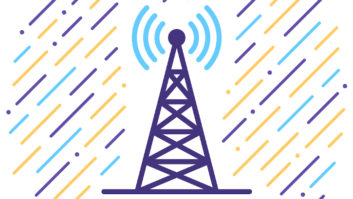
BLANTYRE, Malawi — Private radio station Capital FM has introduced its own version of International Children’s Day of Broadcasting. The idea stems from an initiative launched in 1991 by the United Nations Children’s Fund (UNICEF) to encourage broadcasters worldwide to create awareness of children’s issues.
Capital FM’s Head of Programs Keshia Osman-Meyer is the person behind “Capital FM Day of Children’s Broadcasting,” which is slated to take place twice a year.
CHILDREN SPEAK
“I think it’s important to include kids in broadcasting. It’s always interesting to hear what the children have to say,” Osman-Meyer said. There is a great proverb that says ‘three things tell the truth; drunken people, leggings and children.’ We can’t talk much about drunken people and leggings on radio but it’s great to have kids on radio voicing their opinion about anything.”

Radio presenter Nicole Kamwendo hosts the program in the on-air studio. Pictured from left to right are Sophia Behan, Ellen Lipenga, Dhanush Patel and Akuzike Chiwanda. Photo by Lameck Masina
The inaugural program on Sept. 10 brought together some 20 children, aged between seven and 10, of various races and religion, to the broadcaster’s main studio in Blantyre.
“I put a call on radio and social media sites and included my email. So parents and kids from all over Malawi emailed me saying they wanted to participate. Unfortunately for a start, we couldn’t take all of them,” she said.
Osman-Meyer explains that the 20 selected children were put into groups of four each and assigned a presenter to host them during the interactive two-hour live program.
She said the children were very much involved in the production process of the programs. For example, they determined the topics they wanted to talk about and the music they wanted to listen to.
During the live show, the children aired views on various issues such as their hopes, dreams, aspiration and shared information with their peers. Some kids were tasked to read news bulletins live. The station also tweeted and posted pictures and videos on Facebook during the program.

Dhanush Patel reads the news live. Photo by Lameck Masina
BIANNUAL EVENT
“This gave the kids an experience about what it is like to be on radio,” continued Osman-Meyer. “You know a lot of kids don’t know how the radio works; some think the presenters are actually inside the radio set. We wanted to show them that there is a studio, presenter, console, mics, so much going on. They also get the experience of talking to millions of people on air without having to see them.”
The program attracted various local sponsors including mobile phone company, Telecommunications Network Malawi Ltd., Phalombe Hardware, Kleenkem cleaning products, Lilongwe Dairy and the First Merchant Bank.
Head teacher of Nyasa Junior Academy Charline Evance accompanied two school children to the program. In her opinion, putting the children on radio is the best thing that any responsible school and parent could do.
“It is very important for children all over world to have a voice on air. It helps children acquire communication skills, critical thinking skills and it engages them with the news and music of the day. This should be an ongoing program for Capital Radio for the benefit of kids,” she said.
One of the youths who participated in the program, 10-year-old Dhanush Patel said the program was amusing and educational. “It was fun,” he said. “We learned to keep the environment clean. I read a live news bulletin. It was my first time on air, but I managed!”
One of presenters of the program, Nicole Kamwendo (aka The Radio-Girl Nicole) said hosting the children was inspirational and educational.
“Most people don’t expect to learn from a child but I certainly realized a lot,” she said. “I learned that is importantto just be who you want to be at that moment, and that means being true to oneself — just as these children who were on the radio for the first time felt. As a radio personality, individuality makes us stand out. I loved it and am looking forward to doing it again next time.”
The station, which was founded in 1999, targets 20-60-year-olds using a network of seven Broadcast Solution Electronics 1 kW FM transmitters strategically situated across the country. It reaches to about 75 percent of the country’s population of 16 million people.
The on-air studio is equipped with a modular 16-channel Soundcraft RM100 on-air console, a Telos Hx2 digital telephone hybrid, four Røde mics and a digital STL from BSE.
The radio’s Head of Engineering Kondwani Kalambule said the radio is preparing to install an additional BSE 1 kW FM transmitter in central Malawi to improve its signal in the four districts surrounding the capital, Lilongwe.
“We have already purchased the transmitter. We are going to install it by the end of the year,” explained Kalambule.
Lameck Masina reports






